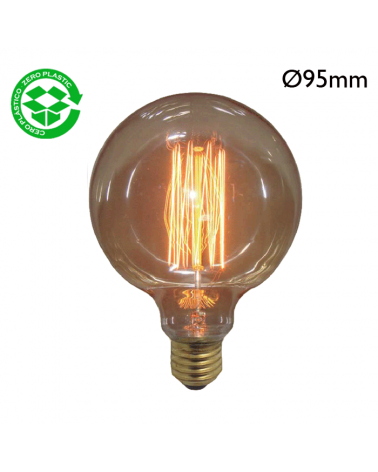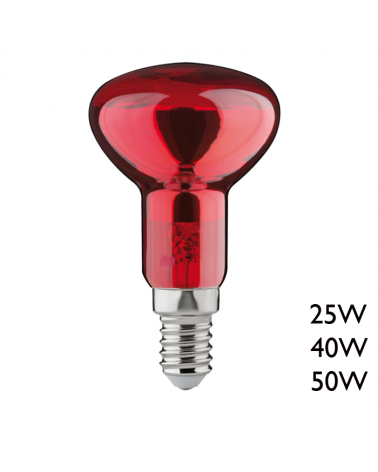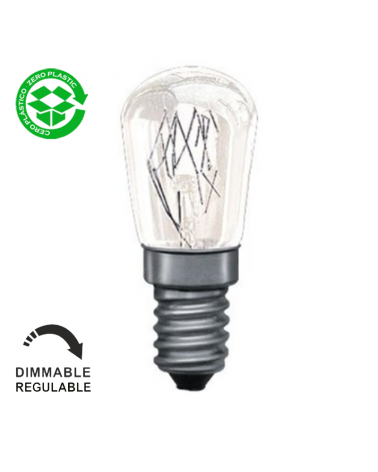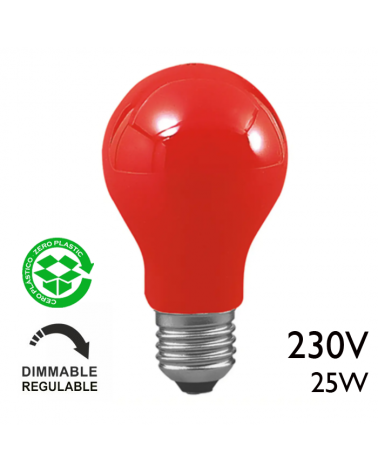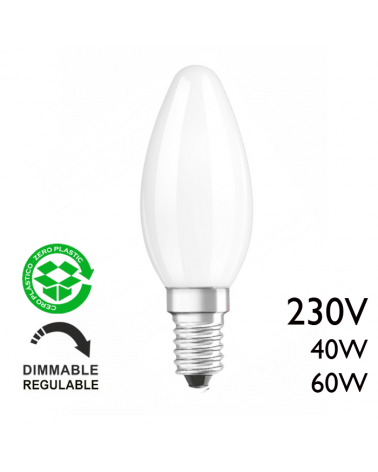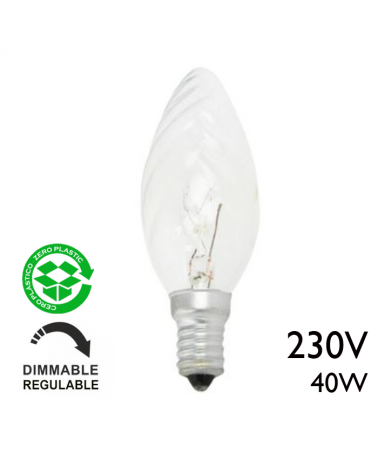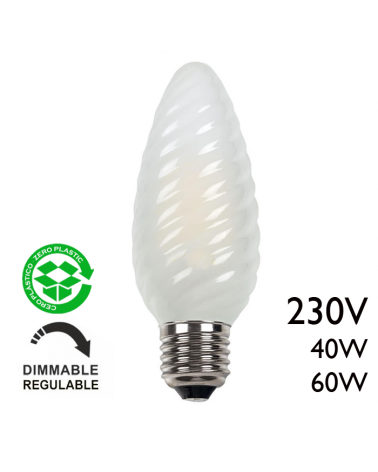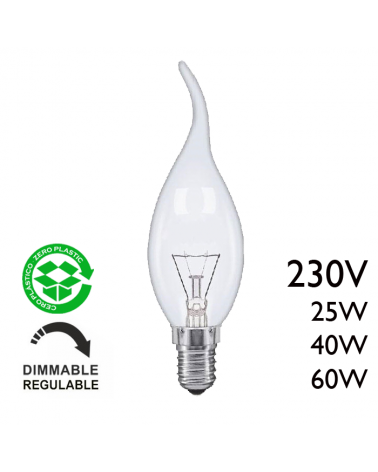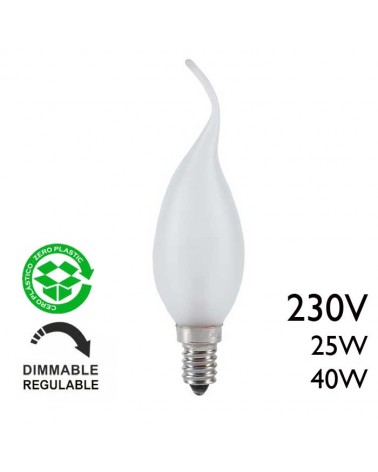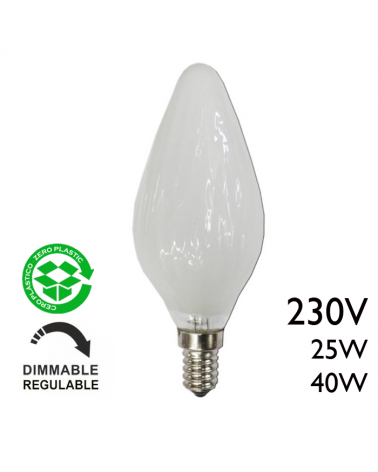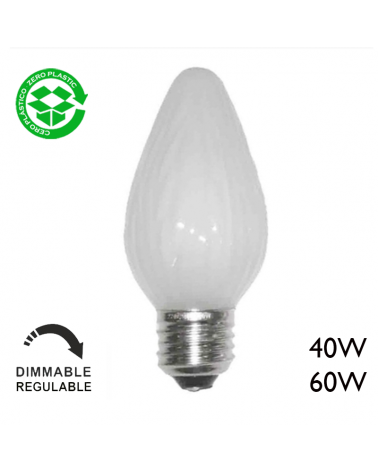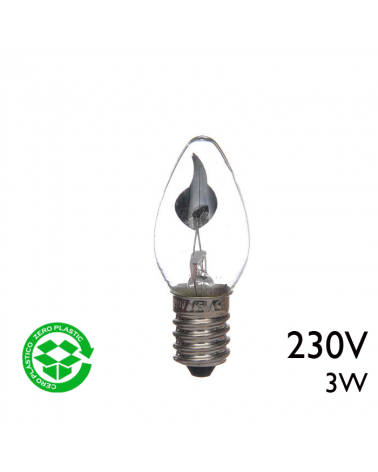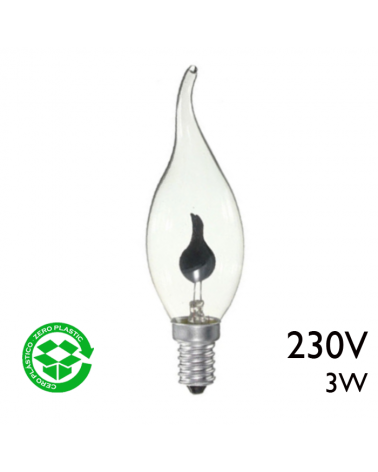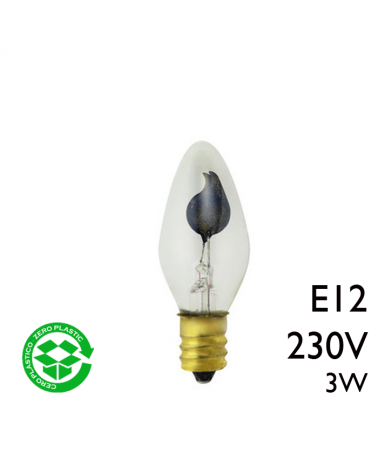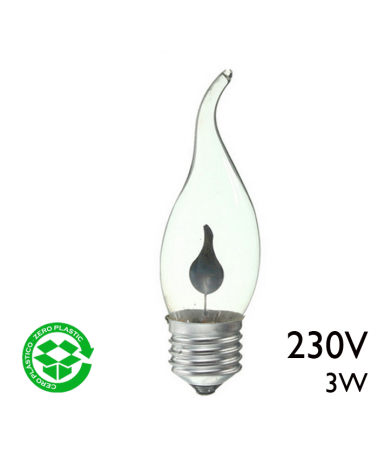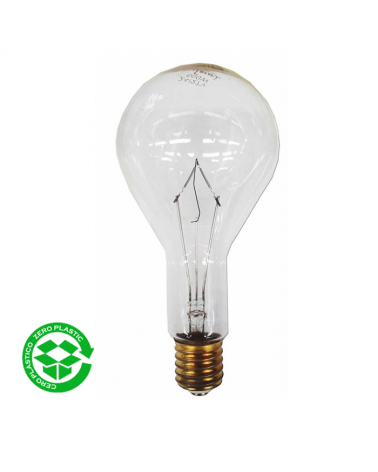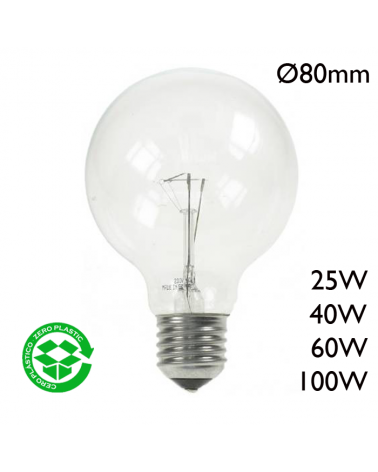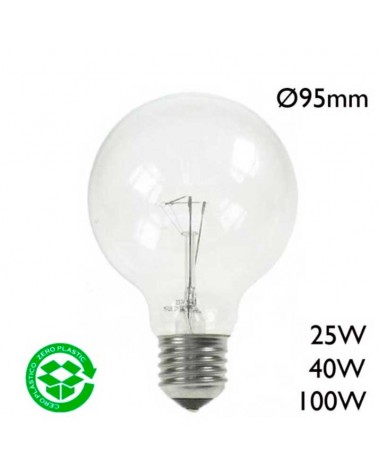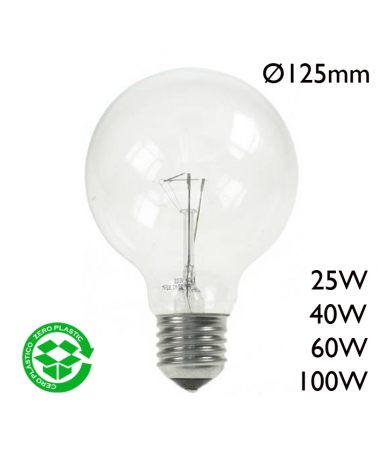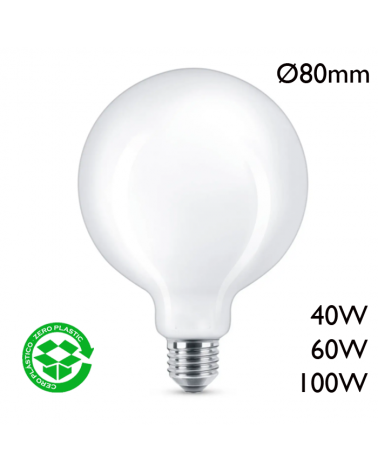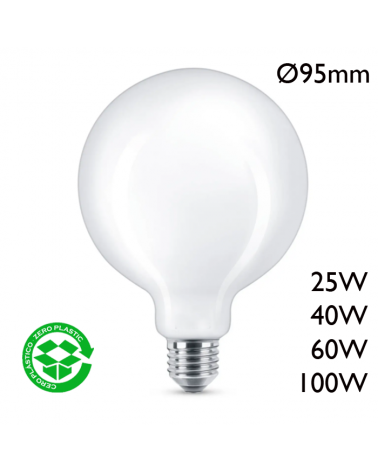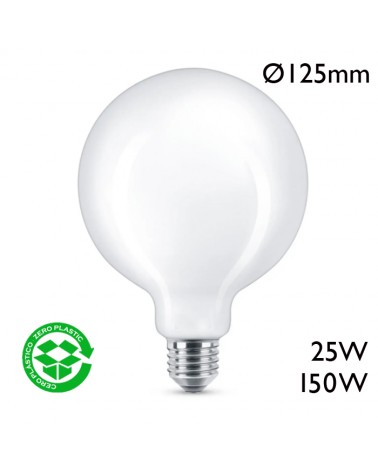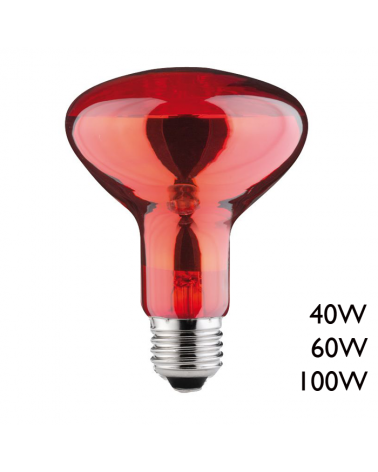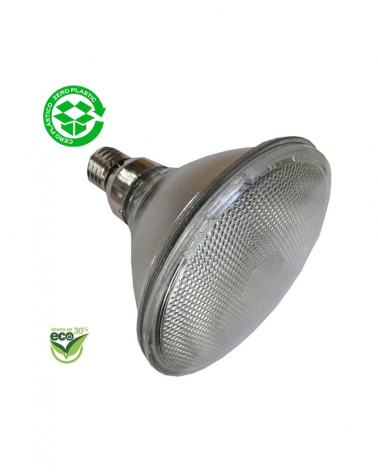Incandescent bulbs
Traditional incandescent filament bulbs. We also offer 125V incandescent bulbs for older electrical installations.
What is an incandescent bulb?
An incandescent or filament bulb is a device that emits light by heating a tungsten metal filament through the flow of electric current.
Incandescent lamps were the first to generate artificial light from electrical energy.

How Does an Incandescent Light Bulb Work?
The operational principle of incandescent light is straightforward. It involves passing an electric current through a filament made of a high-melting-point metal such as tungsten, osmium, or an alloy thereof. The properties of these metals enable reaching incandescence temperatures that can exceed 200°C.
Inside the bulb, there is inert gas that prevents the incandescent filament from self-destruction.
The incandescent filament connects to other longer filaments within the bulb, one at the thread and another at the end.
Passing current through the bulb's socket generates heating through the Joule effect, allowing the lamp to emit visible light to the human eye.
Incandescent light closely resembles natural sunlight.
Who Invented the Incandescent Light Bulb?
The creation of the first incandescent bulb is credited to Thomas Edison in 1880, when he was granted patent 223,898. However, prior to him, other notable researchers had invented various bulb prototypes.
Edison achieved a 48-hour burn time with his first bulb and demonstrated an experiment in his laboratory using a circuit of 40 bulbs that he could turn on and off at will.
Joseph Wilson Swan, who previously obtained a British patent for the bulb, joined forces with Edison to establish the Edison & Swan United Electric Light Company Limited, aiming to enhance the known bulb.
When Was the Incandescent Bulb Invented?
There is much controversy over the invention date of the first bulb. While patented by Edison in 1880, several inventors before him presented various bulb prototypes.
In 1809, Humphry Davy produced light by connecting a carbon filament to battery poles.
In 1820, Warren de la Rue replaced the carbon filament with platinum, connected to two electrical poles within a glass body. Despite its improved functionality, high production costs made commercialization challenging.
In 1835, James Bowman Lindsay built a lamp allowing him to read a book in the dark.
In 1850, Joseph Wilson Swan started using tungsten filament to work on a bulb type and, by 1860, successfully demonstrated a functional device.
In 1860, Joseph Wilson Swan obtained a patent for the bulb in Britain.
In 1880, Thomas Edison was granted patent 223,898 for inventing the bulb.
What Are the Components of an Incandescent Bulb?
- Glass envelope or bulb.
- Inert gas.
- Tungsten filament.
- Contact wire at the end of the socket.
- Contact wire at the thread of the socket.
- Wires for securing and dissipating heat from the filament.
- Cooling conduit and internal support for the filament.
- Contact base.
- Metallic socket.
- Electrical insulation.
- Electrical contact foot.
What Are the Types of Incandescent Bulbs?
The Edison screw or Edison base is the mechanism for fitting a bulb or lamp developed by Thomas Edison.
This type of connection is identified by the designation Exx, where xx refers to the connector's diameter in millimeters.
In most countries using 220-240 volts AC as household current, common sizes in Europe are E27 (large socket) and E14 (small socket), while
